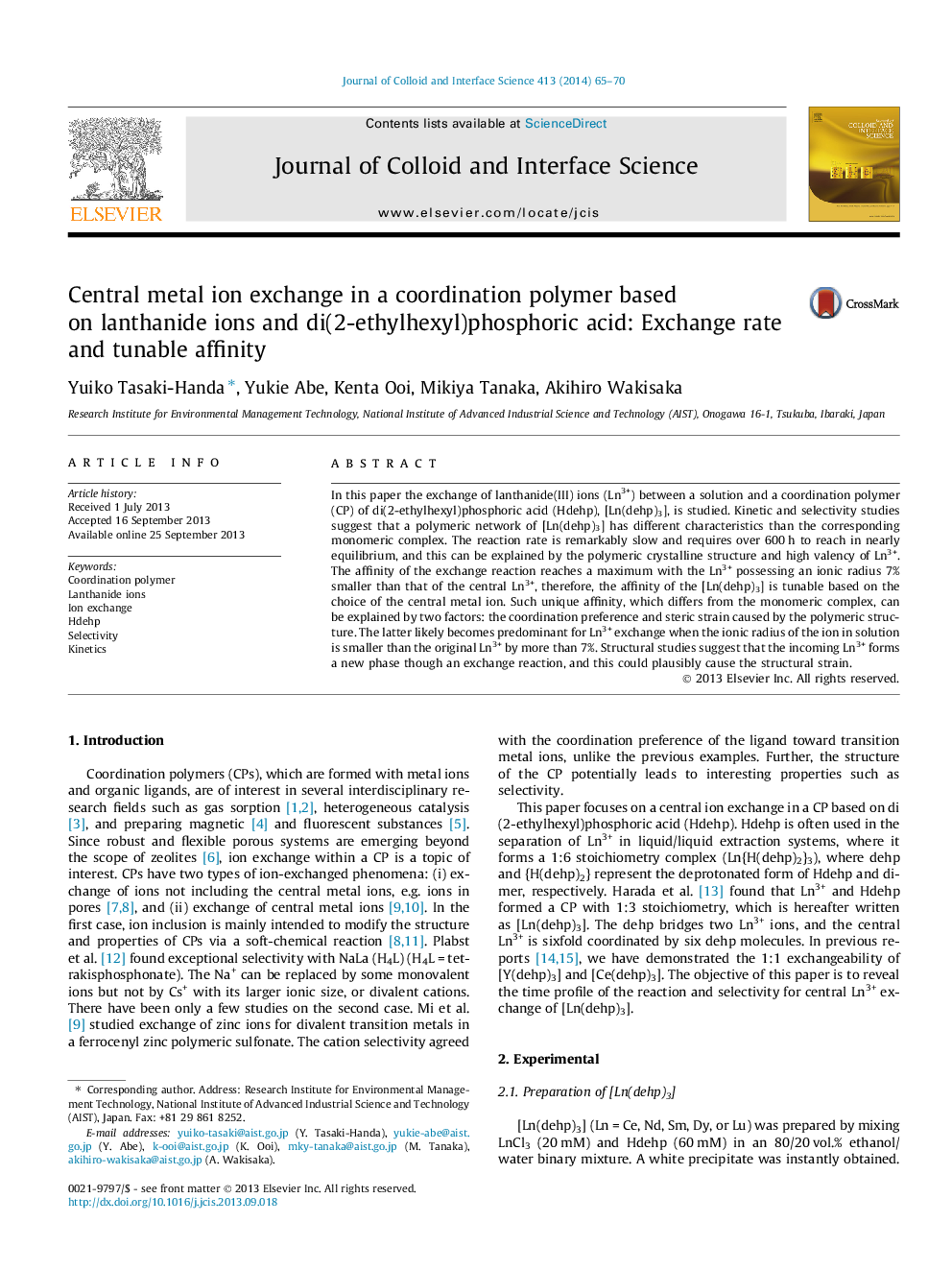| Article ID | Journal | Published Year | Pages | File Type |
|---|---|---|---|---|
| 607510 | Journal of Colloid and Interface Science | 2014 | 6 Pages |
•Exchange of central lanthanide ion in a coordination polymer is studied.•Affinity is tunable by a choice of central metal ion.•Crystalline structure of the coordination polymer likely causes slow kinetic and unique affinity.
In this paper the exchange of lanthanide(III) ions (Ln3+) between a solution and a coordination polymer (CP) of di(2-ethylhexyl)phosphoric acid (Hdehp), [Ln(dehp)3], is studied. Kinetic and selectivity studies suggest that a polymeric network of [Ln(dehp)3] has different characteristics than the corresponding monomeric complex. The reaction rate is remarkably slow and requires over 600 h to reach in nearly equilibrium, and this can be explained by the polymeric crystalline structure and high valency of Ln3+. The affinity of the exchange reaction reaches a maximum with the Ln3+ possessing an ionic radius 7% smaller than that of the central Ln3+, therefore, the affinity of the [Ln(dehp)3] is tunable based on the choice of the central metal ion. Such unique affinity, which differs from the monomeric complex, can be explained by two factors: the coordination preference and steric strain caused by the polymeric structure. The latter likely becomes predominant for Ln3+ exchange when the ionic radius of the ion in solution is smaller than the original Ln3+ by more than 7%. Structural studies suggest that the incoming Ln3+ forms a new phase though an exchange reaction, and this could plausibly cause the structural strain.
Graphical abstractFigure optionsDownload full-size imageDownload high-quality image (197 K)Download as PowerPoint slide
